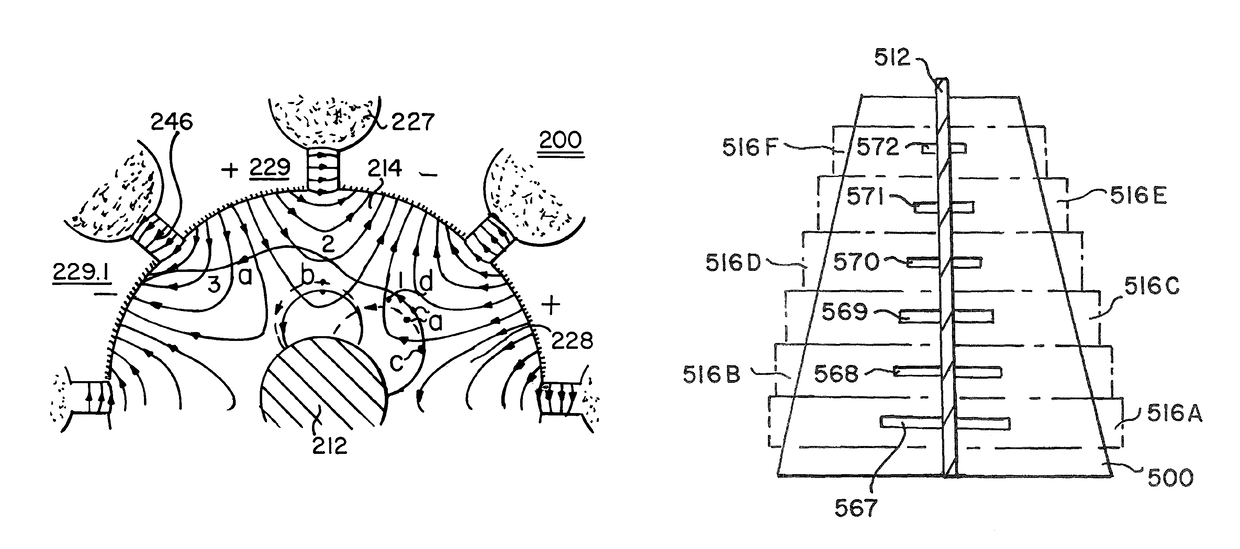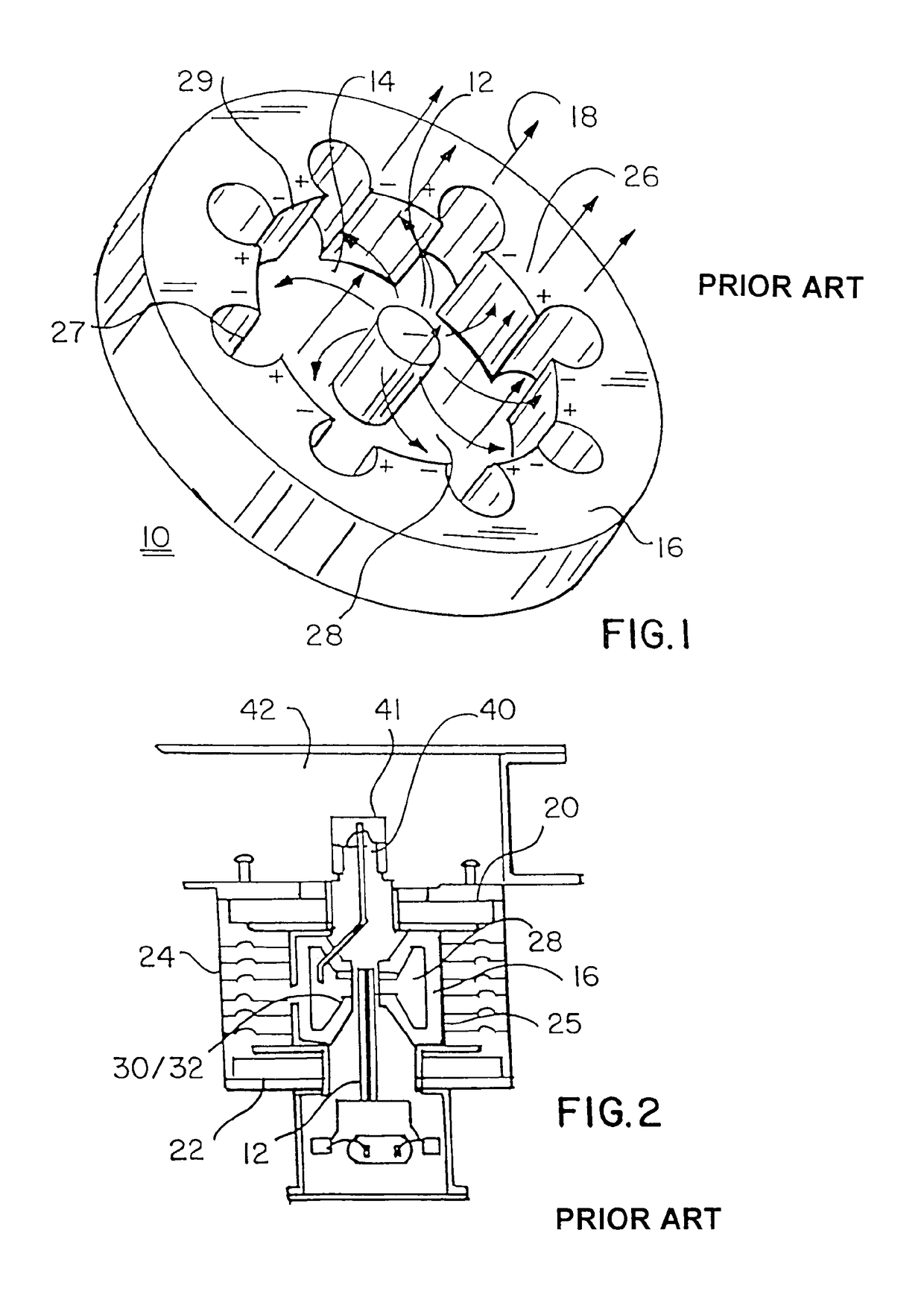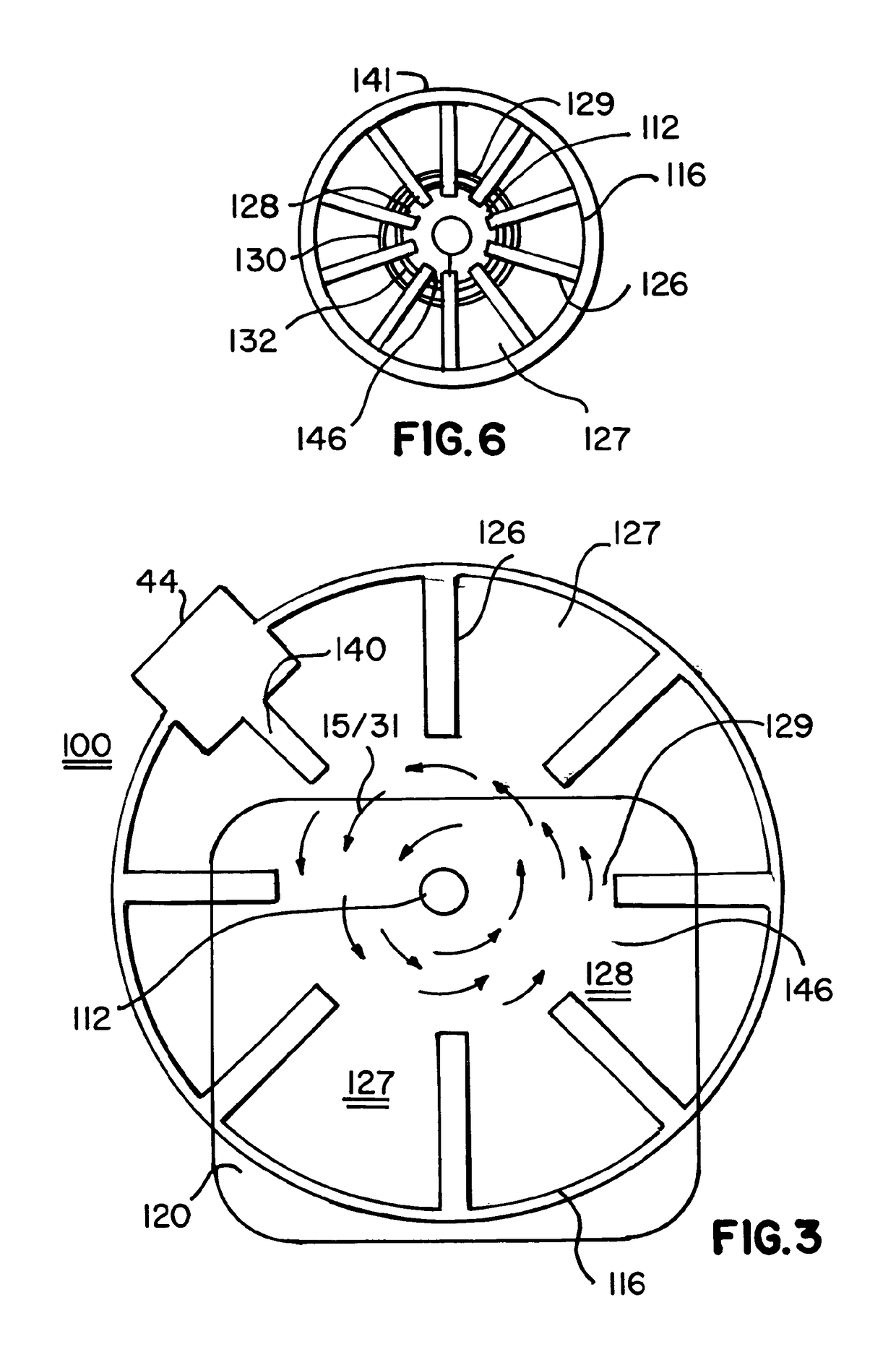System for generation of useful electrical power from isotopic emissions
a technology of isotopic emissions and electrical power, applied in the direction of generators/motors, electrical apparatus, radiological applications, etc., can solve the problems of radioactive waste which results from its fission, most such decay, and unstable neutrons, and achieve safe and cost-effective effects
- Summary
- Abstract
- Description
- Claims
- Application Information
AI Technical Summary
Benefits of technology
Problems solved by technology
Method used
Image
Examples
embodiment 600
[0163]Shown in FIG. 34 is a further embodiment 600 of the present invention This embodiment, like that of FIG. 19, employs a common anode rod 612 upon which are stacked groups 601 of a lower magnet 620, an anode block 616A, and an opposing magnet 622. Each group 601 is separated from the next successive group by a magnetically insulating layer 623. In this embodiment, as with the other embodiments above described, a dielectric 660 may be inserted within either or both the interaction space of anode block 616A or the anode cavities 627 of the anode block. These dielectrics, wherever positioned, may be tunable, as is known in the art of dielectrics, as taught in U.S. Pat. Nos. 6,774,077 and 7,060,636. The significance of use of a dielectric (in this case could be some noble fluid or liquid under pressure, the commonly used fluid is argon fluid under pressure) in the interaction space is that the extreme velocity and momentum of the beta decay electrons may be mediated and more readily...
embodiment 700
[0168]In FIG. 39 is shown a schematic of a further embodiment 700 of the invention in which a polar array of antennae 727 are used as a functional equivalent of said anode cavities. Therein, a cathode 712 emits beta decay electrons 12 which, as in other embodiments, rotate within an interaction space 728. However, the resultant obtaining electron cloud induces the above-discussed LC values and excitation to antennae 727, as opposed to said cavities 27 / 127 / 227 / 327 of the other embodiments and induces positive and negative polarities. These polarities are strapped together by strapping means 730 and 732. Said antennae will resonate in like fashion to said cavities. Said strapping is used for purposes of phase lock, amplitude control and communication of output 725 to an optional power port, wave guides (not shown), and a power combiner 760.
[0169]It is to be appreciated that the principles of the present invention are equally applicable to use with a cathode characterized by the emissi...
PUM
 Login to View More
Login to View More Abstract
Description
Claims
Application Information
 Login to View More
Login to View More - R&D
- Intellectual Property
- Life Sciences
- Materials
- Tech Scout
- Unparalleled Data Quality
- Higher Quality Content
- 60% Fewer Hallucinations
Browse by: Latest US Patents, China's latest patents, Technical Efficacy Thesaurus, Application Domain, Technology Topic, Popular Technical Reports.
© 2025 PatSnap. All rights reserved.Legal|Privacy policy|Modern Slavery Act Transparency Statement|Sitemap|About US| Contact US: help@patsnap.com



